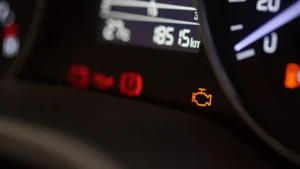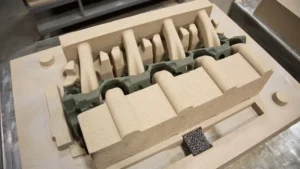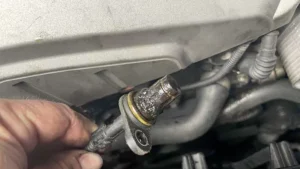The car engine head, also known as the cylinder head, is a crucial component of any internal combustion engine. It sits atop the engine block and houses essential parts such as the valves, spark plugs, and in some designs, the camshaft. Its primary function is to seal the combustion chamber and manage airflow in and out of the engine, ensuring efficient combustion. Despite its robust construction, the engine head is prone to several common problems that can affect your vehicle’s performance, reliability, and longevity. Understanding these issues and knowing how to address them is vital for both casual car owners and automotive enthusiasts.
1. Cracked Cylinder Head
Symptoms
A cracked cylinder head is one of the most severe problems an engine can face. Common signs include:
- Overheating of the engine
- White smoke from the exhaust
- Loss of coolant without visible leaks
- Engine misfires or rough idling
Causes
Cracks typically occur due to:
- Engine overheating
- Rapid temperature changes
- Manufacturing defects in the metal
- High-stress conditions such as racing or towing heavy loads
Solutions
- Inspection: Use a pressure tester or perform a visual inspection to locate cracks.
- Repair: Minor cracks can sometimes be repaired using specialized welding techniques.
- Replacement: In most cases, especially with severe cracks, replacing the cylinder head is the safest and most reliable option.
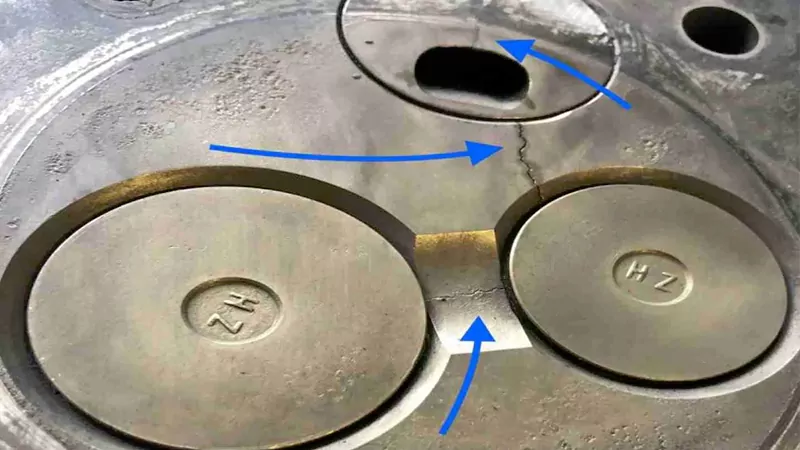
2. Warped Cylinder Head
Symptoms
A warped cylinder head often results from overheating and can compromise the engine’s sealing. Signs include:
- Coolant leakage into the combustion chamber
- White smoke from the exhaust
- Reduced engine performance
- Oil contamination
Causes
- Prolonged engine overheating
- Rapid cooling after intense engine operation
- Improper torqueing during head installation
Solutions
- Resurfacing: A skilled machinist can resurface the cylinder head to restore flatness.
- Replacement: Severely warped heads may require a full replacement to ensure proper sealing and engine efficiency.
- Prevention: Maintain a regular cooling system check, replace coolant at recommended intervals, and avoid prolonged high-temperature operation.

3. Head Gasket Failure
Symptoms
Head gasket failure is closely related to cylinder head problems and can manifest as:
- Engine overheating
- Milky white oil (indicating coolant contamination)
- Loss of compression in one or more cylinders
- Bubbles in the radiator
Causes
- Overheating
- Poor installation or improper torque of the head bolts
- Engine detonation or pre-ignition
Solutions
- Diagnosis: Conduct a compression test, leak-down test, or chemical test of the coolant for exhaust gases.
- Repair/Replacement: Replace the head gasket and inspect the cylinder head and engine block for warping or cracks before reassembly.
- Preventive Measures: Regularly maintain cooling systems, avoid engine overloading, and ensure professional installation during repairs.
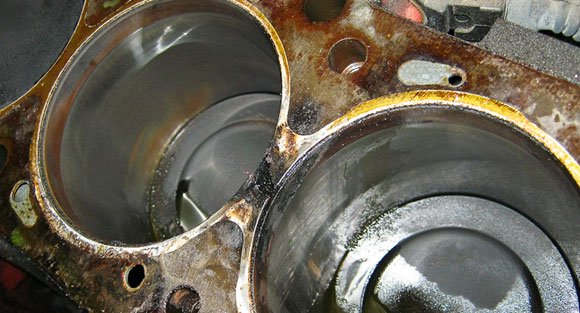
4. Valve Problems
Symptoms
Valves are essential for controlling the intake and exhaust of air-fuel mixture and combustion gases. Common valve issues include:
- Engine misfires
- Loss of power
- Unusual knocking or ticking noises
- Poor fuel economy
Causes
- Carbon buildup on valve surfaces
- Bent or burned valves due to overheating or detonation
- Worn valve guides or seals
Solutions
- Cleaning: Carbon deposits can be removed using chemical cleaners or professional decarbonization services.
- Valve Replacement: Burned or bent valves must be replaced to restore proper engine function.
- Valve Adjustment: Adjust valve clearance to manufacturer specifications to prevent uneven wear and maintain performance.
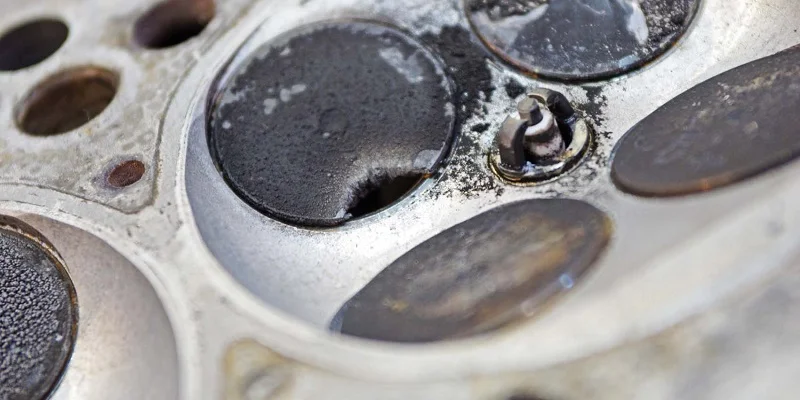
5. Coolant Leaks
Symptoms
Coolant leaks around the cylinder head can lead to overheating and engine damage. Signs include:
- Puddles of coolant under the vehicle
- Low coolant levels without visible external leaks
- Engine overheating or temperature fluctuations
Causes
- Cracked head or engine block
- Failed head gasket
- Loose or improperly torqued head bolts
Solutions
- Leak Detection: Pressure-test the cooling system to identify leak points.
- Repair: Minor gasket or seal leaks can sometimes be repaired, but persistent leaks usually require replacement of the gasket or cylinder head.
- Prevention: Routine inspection of hoses, gaskets, and coolant levels can help prevent major issues.
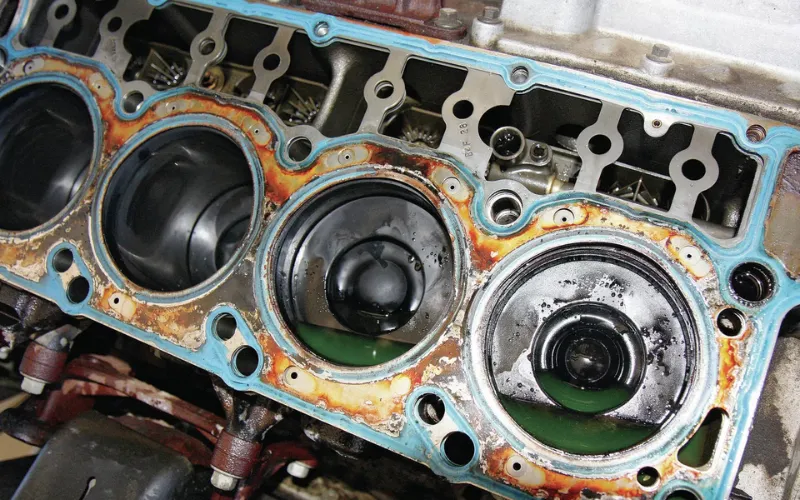
6. Overheating and Thermal Stress
Symptoms
Overheating can damage both the cylinder head and associated components. Common indicators include:
- Engine temperature gauge reading high
- Reduced performance
- Steam or smoke from under the hood
Causes
- Low coolant levels or coolant pump failure
- Blocked radiator or cooling passages
- Excessive engine load or aggressive driving
Solutions
- Cooling System Maintenance: Regularly flush the radiator, replace coolant, and ensure the water pump is functioning correctly.
- Head Inspection: Overheating can warp or crack the cylinder head, so inspect and repair or replace as needed.
- Driving Habits: Avoid prolonged high RPM operation or towing beyond vehicle capacity.
7. Oil Contamination
Symptoms
Oil contamination in the engine can affect the cylinder head and overall performance:
- Milky or frothy oil
- Low oil pressure
- Engine noise due to inadequate lubrication
Causes
- Blown head gasket allowing coolant into the oil
- Cracks in the cylinder head
- Poor maintenance or infrequent oil changes
Solutions
- Oil Change: Drain and replace contaminated oil immediately.
- System Flush: In severe cases, flush the engine to remove all traces of contaminants.
- Component Repair: Fix the source of contamination, such as replacing the head gasket or repairing the cylinder head.
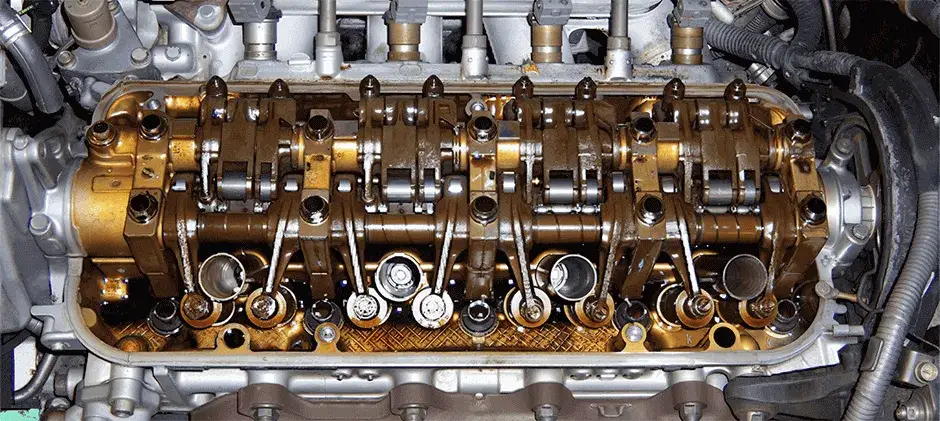
Preventive Measures to Protect Your Engine Head
While repairs are sometimes unavoidable, prevention is always better than cure. Here are key strategies:
- Regular Maintenance: Follow your vehicle’s recommended service intervals for oil, coolant, and other fluids.
- Monitor Engine Temperature: Avoid driving if your temperature gauge indicates overheating.
- Use Quality Parts: Whether it’s head gaskets, bolts, or coolant, always use high-quality components.
- Professional Installation: Incorrect installation of cylinder heads or gaskets can lead to long-term problems.
- Coolant System Checks: Inspect hoses, radiator, and thermostat regularly to ensure efficient cooling.
Conclusion
The car engine head is a critical part of the engine’s performance and longevity. Problems such as cracks, warping, valve issues, head gasket failure, and overheating can severely affect your vehicle’s operation. Timely detection and proper repair are essential to avoid more extensive engine damage. By understanding these common issues and following proper maintenance practices, you can extend the life of your engine and ensure reliable performance.
For car owners and automotive professionals alike, recognizing the signs of cylinder head problems and taking corrective action promptly can save both time and money while maintaining optimal engine efficiency.
If you need a reliable replacement, contact XINJIN Manufacture. We provide high-quality, brand-new aluminum cylinder heads with guaranteed performance and exceptional service, ensuring both your vehicle’s efficiency and your peace of mind.

